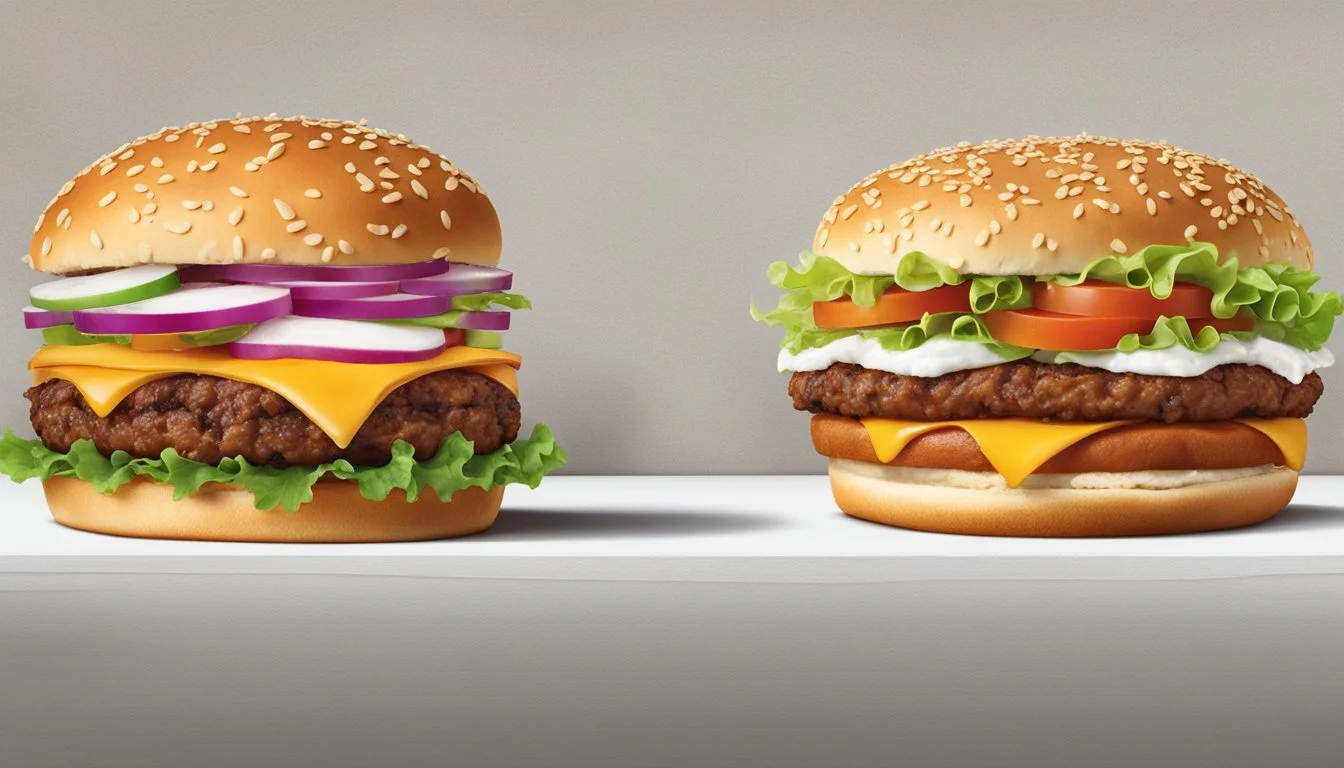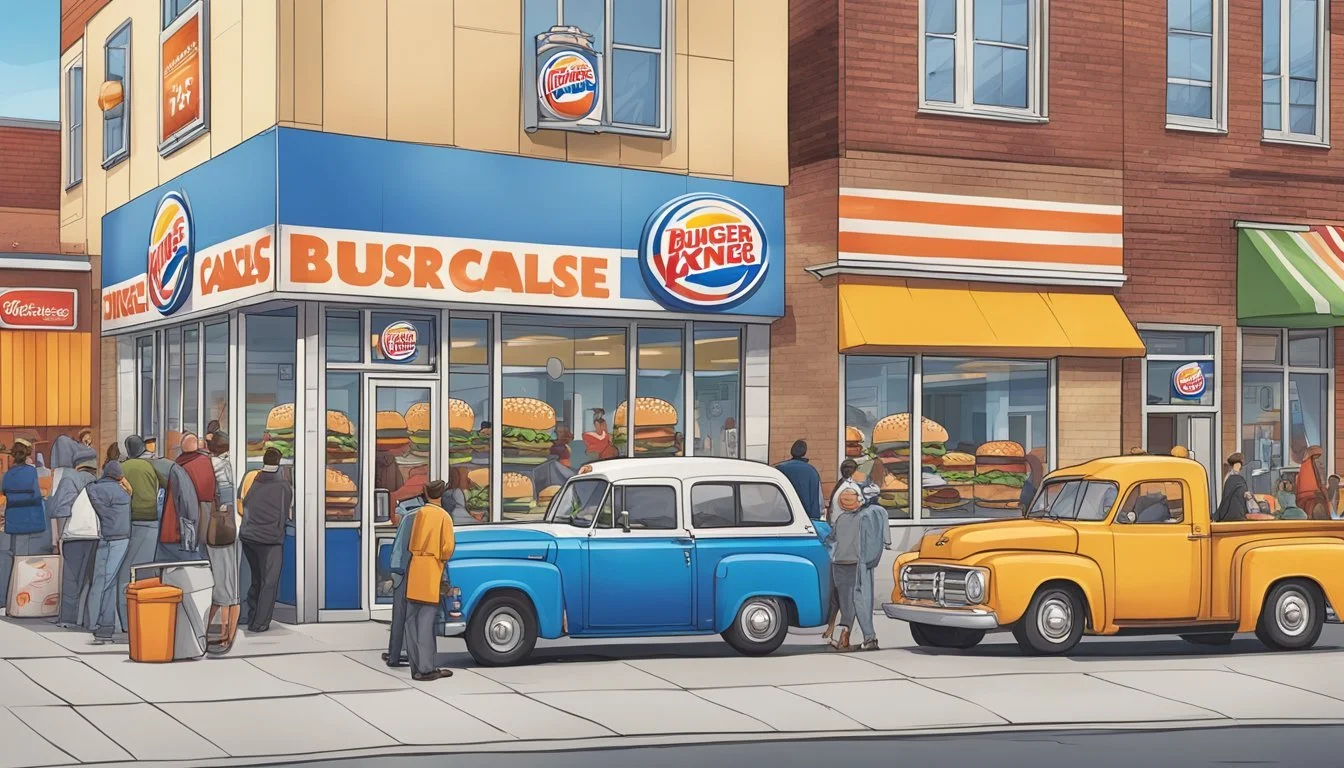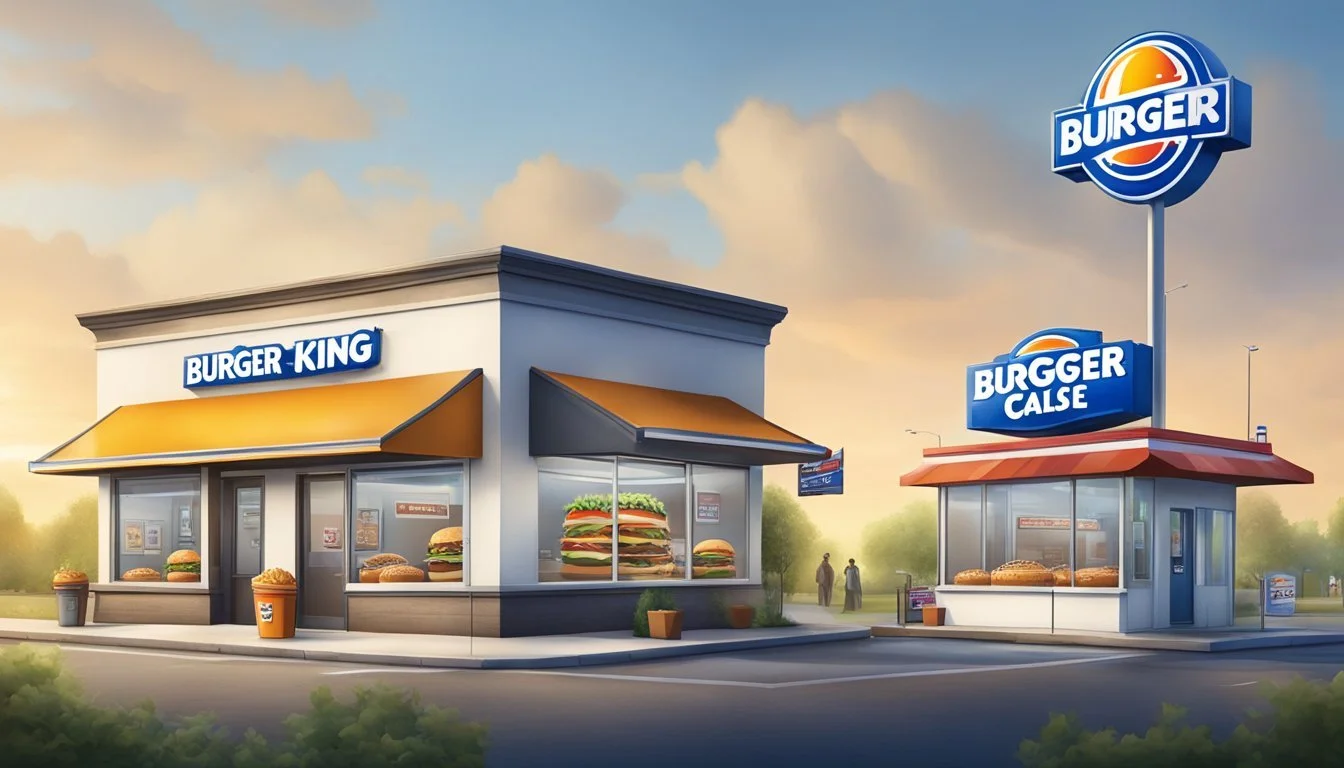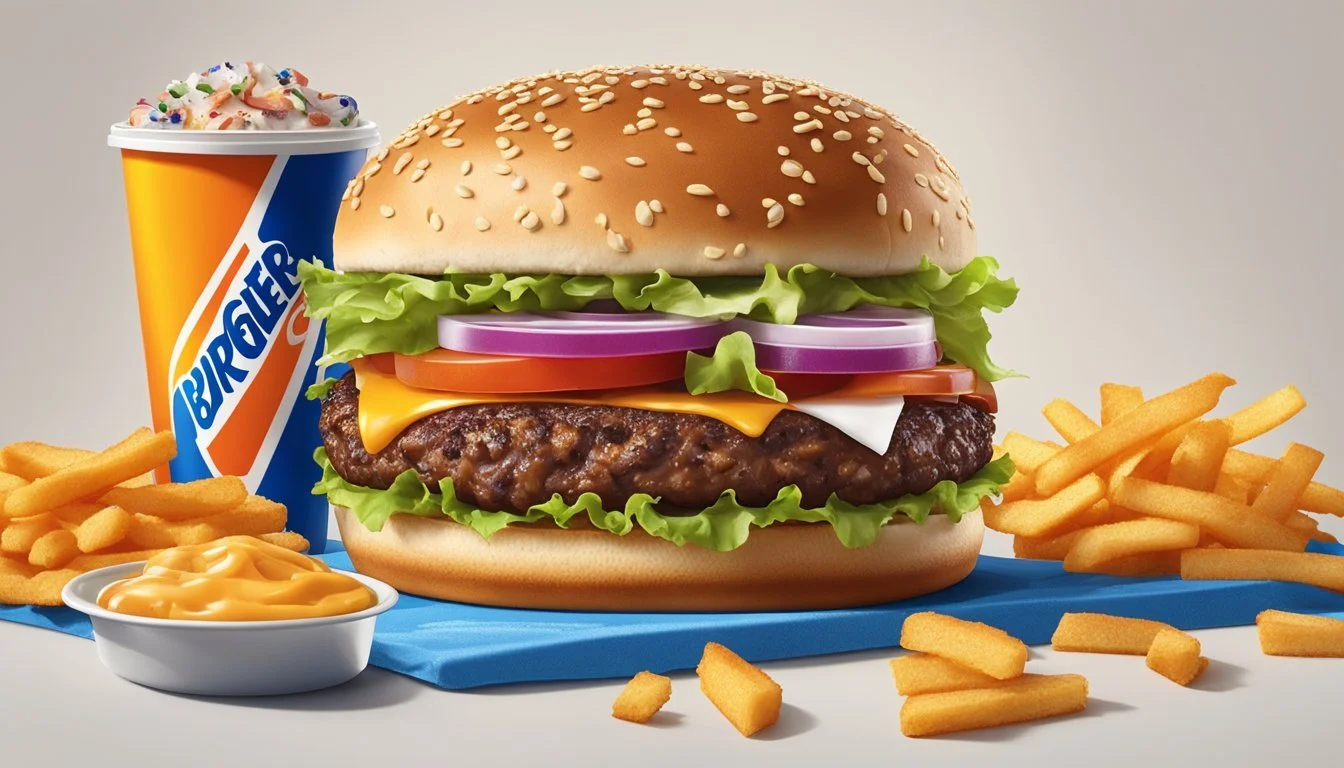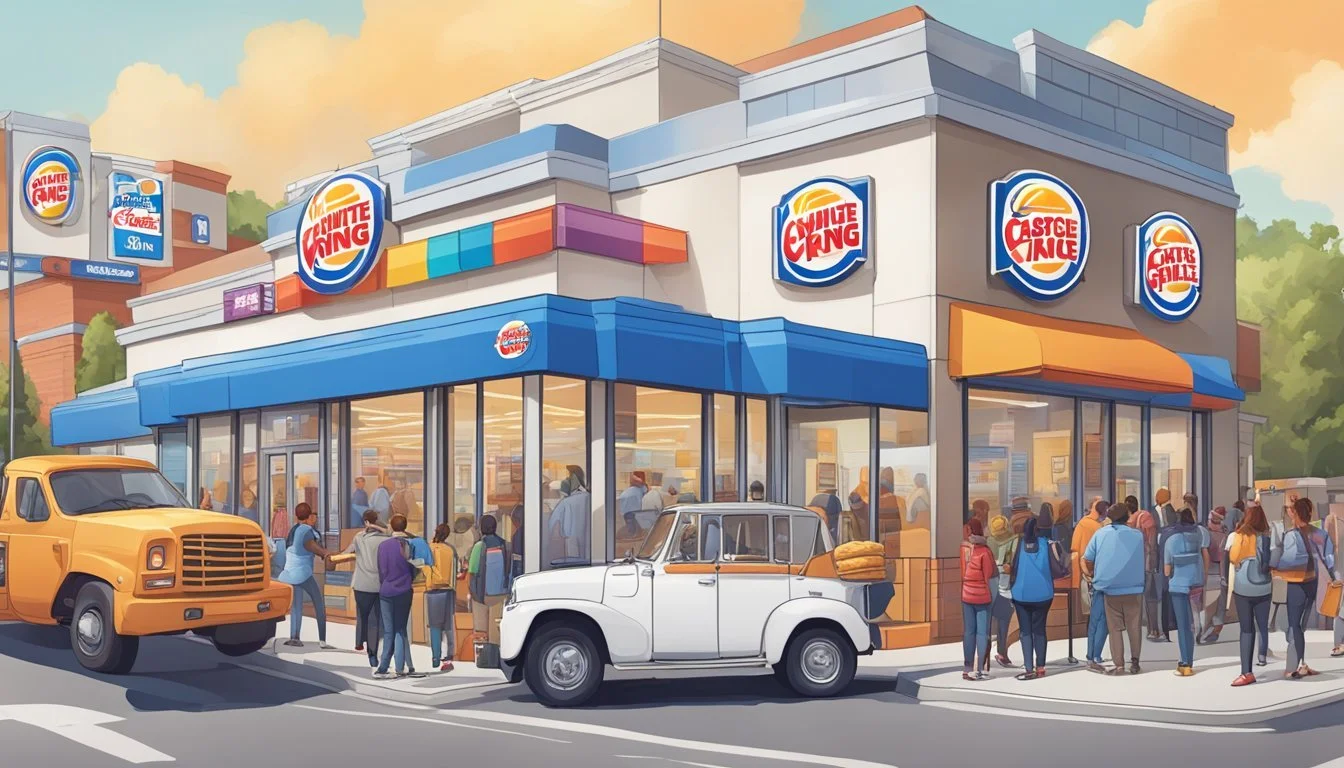Burger King vs White Castle
A Comparative Analysis of Two Fast-Food Icons
Burger King and White Castle are two fast-food chains that have carved specific niches in the world of quick-service hamburgers. Burger King, known for its flame-grilled burgers and iconic "Whopper," has established itself as an industry giant with a presence in over 100 countries. Its commitment to taste and size has made it a go-to for those seeking a hearty fast-food experience.
On the other hand, White Castle, often credited with being the first fast-food hamburger chain, has its own loyal following. Renowned for its small, square sliders, White Castle has emphasized affordability and convenience since its inception in 1921. Its focused menu and distinctive burger style offer a different take on what a fast-food burger can be.
Choosing between Burger King and White Castle often comes down to personal preferences regarding taste, portion size, and dining experience. Each brand's devotees argue passionately for their respective favorites, citing either the unique flavor of a flame-grilled Burger King patty or the simplicity and nostalgia of a White Castle slider. Where one prioritizes a more traditional burger experience with a twist on classic condiments, the other opts for a minimalist yet iconic approach to satisfy a different kind of burger craving.
Origins and History
In the realm of fast food, Burger King and White Castle have etched their places in history through their distinct contributions to the industry. The former reshaped the franchise model, while the latter pioneered the fast food burger concept.
Establishment of Burger King
Burger King, initially named Insta-Burger King, was founded in 1954 in Florida by James McLamore and David Edgerton. The pair were inspired by the success of McDonald's and had a vision of their own for a fast-food burger joint. They introduced the Whopper in 1957, which set them apart and became their signature product. The establishment of Burger King in Jacksonville, Florida, marked the beginning of a new chapter in the fast food saga. Burger King's expansion and franchise model contributed significantly to its growth.
Founded: 1954
Original Name: Insta-Burger King
Location: Florida
Notable Product: Whopper
Rise of White Castle
White Castle holds the title of being the first fast-food burger chain, launched in 1921 in Wichita, Kansas, by Billy Ingram and Walter Anderson. They revolutionized the food industry by selling small, square burgers, famously known as "sliders", at an affordable price. Their streamlined operation and assembly line production foreshadowed the modern fast-food establishment. White Castle's early years set the standard for the burger chains that would follow, and their influence extended widely, particularly in the Midwest and New York.
Founded: 1921
Founders: Billy Ingram, Walter Anderson
Location: Wichita, Kansas
Key Contribution: Standardized the fast food burger concept
Menu Offerings Comparison
A critical aspect of evaluating Burger King and White Castle revolves around their distinct menu offerings. Burger King is known for its wide variety, while White Castle has made a name for itself with its unique sliders.
Burger King's Diverse Menu
Burger King's menu stands out with a range of options that cater to various tastes. They are particularly known for their flame-grilled hamburgers, which come with a selection of toppings like lettuce, tomato, onions, pickles, and a suite of condiments including ketchup, mustard, and mayonnaise. Their foundational offering, the Whopper, has been a long-standing favorite. Aside from burgers, the menu includes chicken sandwiches, salads, breakfast items, and a variety of sides.
Burgers: Flame-grilled with a choice of cheese, bacon, and more.
Sides: Includes fries, onion rings, and chicken nuggets.
White Castle's Signature Sliders
White Castle's menu centers around its iconic sliders. These small square hamburgers are a signature item and are often enjoyed with diced onions and pickles. Beyond their classic beef sliders, the chain also offers variations featuring chicken, fish, and Impossible beef among their slider selections. White Castle's sliders are about simplicity and tradition, with the primary focus on their small, steamed hamburgers that come with or without cheese.
Sliders: Offered with beef, chicken, fish, and plant-based options.
Toppings: Traditionally served with onions and pickles.
Culinary Experience
When exploring the culinary experiences at Burger King and White Castle, one must assess the flavor profiles, freshness and texture, as well as the customization options offered by these establishments.
Flavor Profiles
Burger King stands out with its iconic Impossible Whopper, an innovative plant-based option that mimics the rich, smoky flavor of beef, catering to those seeking vegetarian options. The use of flame grilling technique imparts a distinct chargrilled taste that defines its beef and chicken sandwiches alike. White Castle, on the other hand, is renowned for its Original Slider, a small-sized burger with a steam-grilled beef patty over onions, delivering a unique flavor combination of meat and savory onions in every bite.
Texture and Freshness
White Castle's steam-grilled patties on a bed of onions provide a moist texture that contrasts with the softness of the bun. This method ensures a consistent, gentle cooking process that keeps the patties tender. Burger King prides itself on the freshness of its offerings, using ingredients like crisp lettuce and ripe tomatoes to complement the texture of its well-seasoned, flame-grilled patties, with a choice of a soft sesame-seed bun or no bun at all for a low-carb option.
Customization Options
Burger King offers a range of customization options that allow diners to tailor their burger with various toppings and sauces:
Veggies: Lettuce, tomatoes, onions, jalapeños, and more
Cheese: A selection of cheese options to enhance the burger
Sauces: Ketchup, mayo, mustard, BBQ sauce, and more
White Castle's customization tends to be more limited due to its focus on small, consistent sliders. However, patrons can still choose to add or remove certain elements, like cheese, to suit their taste.
Nutritional Content
When comparing Burger King and White Castle, one must consider the nutritional content of their offerings, including the calorie counts, the protein and fat composition, as well as the availability of dietary-specific options such as vegetarian burgers.
Caloric Comparison
Burger King:
Hamburger: 241 calories
White Castle:
Original Slider: 140 calories
The caloric content of a standard beef hamburger from Burger King stands at 241 calories, whereas a classic Original Slider from White Castle contains 140 calories. This makes the White Castle slider a less calorific option for those counting calories.
Protein and Fat Content
Burger King (Hamburger):
Protein: Not specified in search results
Fat: Not specified in search results
White Castle (Original Slider):
Protein: 6 grams
Fat: 7 grams
Differences in protein and fat content are also critical when comparing burgers. White Castle's Original Slider offers 6 grams of protein and 7 grams of fat, nutrients that are significant for anyone tracking their macro-nutrient intake. Details for Burger King's hamburger were not provided in the search results.
Dietary Offerings
Both chains have responded to the growing demand for diet-friendly and meatless options:
Burger King introduced the Impossible Burger, a plant-based burger designed to mimic the taste and texture of beef.
White Castle offers options for vegetarians, including a meatless burger that still aims to deliver the flavor profiles customers expect from a fast food burger.
In summary, both Burger King and White Castle have adapted their menus to accommodate a range of nutritional and dietary needs, focusing on delivering traditional fast food experiences while also offering alternative options like plant-based meatless burgers.
Price and Value for Money
When comparing Burger King and White Castle, a consumer's decision often hinges on getting the most satisfaction for their dollar. This analysis will consider the cost of offerings and how they relate to portion sizes and the overall eating experience.
Cost Analysis
Burger King and White Castle offer distinct pricing models. At Burger King, the price for their signature Whopper burger typically falls around $4 to $5, depending on the region and local pricing strategies. White Castle's offerings are markedly different, with their renowned Original Slider being priced around $0.72 to $1.00. This stark price difference reflects the two chains' different approaches: Burger King focuses on larger, single-item servings, while White Castle encourages purchasing in larger quantities, sometimes offering value deals for a "sack" of sliders.
Burger King: Whopper - $4 - $5
White Castle: Original Slider - $0.72 - $1.00
Portion Sizes and Satisfaction
Portion size plays a critical role in dictating value for money. Burger King's Whopper offers a larger, single sandwich that satisfies one's hunger with its substantial size. On the flip side, White Castle's sliders are miniaturized versions of a full-sized burger. Here, satisfaction may come from the variety of consuming multiple sliders or the convenience of sharing. In the end, customer satisfaction relates to whether they prefer a more sizeable individual burger or the novelty of several small sliders to satiate their appetite.
Burger King: One Whopper - Satisfies as a full meal
White Castle: Multiple Sliders - Variety and sharing potential
Brand Presence and Customer Loyalty
In assessing the battle between Burger King and White Castle, two titanic fast-food chains, one must consider their distinct brand presence in the U.S. and their varying degrees of global recognition, which directly influence customer loyalty.
Market Influence in the United States
Burger King and White Castle have positioned themselves uniquely in the American market. Burger King, a behemoth in the fast-food arena, has a commanding presence with a ranking often placing it within the top three of American fast-food chains. Their strategy, capitalizing on bold and innovative promotions, has firmly established their brand in the minds of consumers.
White Castle, while not as extensive in quantity as Burger King, holds the title of the first fast-food hamburger chain in the U.S. Its influence touches upon a niche market that prizes the brand's signature sliders and their storied history. Brand loyalty is particularly notable with White Castle, as they have cultivated a dedicated fan base that has persisted through generations.
Global Brand Recognition
On a global scale, Burger King's recognition is substantial. They operate in multiple countries with a marketing strategy tailored to resonate across diverse cultures. The brand's adaptability to different markets makes it a notable player internationally, enhancing its brand presence.
White Castle's global footprint is considerably smaller. Their focus remains central to the American consumer, and while this has limited their international reach, it has allowed them to maintain a strong influence and brand loyalty within the United States.
Restaurant Atmosphere and Service
When choosing between Burger King and White Castle, the in-store experience and customer service quality are crucial factors. Each chain has developed its unique take on these aspects, influencing customer preferences and brand loyalty.
In-Store Experience
Burger King: The atmosphere in Burger King restaurants is typically characterized by a contemporary design with comfortable seating arrangements. They aim to provide a relaxing environment where customers can enjoy their meals. Most locations feature a kids' area, making it a family-friendly option.
White Castle: White Castle often embraces a retro diner aesthetic, with a simpler layout that encourages quick dining or takeout. While seating is available, the design reflects the chain's heritage and history, which adds to the nostalgic experience for many patrons.
Customer Service Quality
Burger King: Generally offers prompt service with a focus on efficiency. Employees are trained to ensure that orders are taken and delivered accurately and quickly, maintaining a high level of customer satisfaction. The drive-thru service at Burger King is particularly noted for its speed.
White Castle: Customer service at White Castle is known for its personable approach. Even during busy hours, staff members strive to interact with customers, ensuring a pleasant experience. The consistent quality of service appears to be a key driver of the chain's cult following.
Social and Environmental Responsibility
Burger King and White Castle are two fast-food entities that showcase their commitment to social and environmental responsibility through various initiatives. Burger King has undertaken efforts to reduce its environmental footprint by introducing the Impossible Whopper, a burger crafted with a plant-based patty, addressing the increasing demand for sustainable meat alternatives. They have also focused on implementing green packaging solutions as a step towards sustainability.
White Castle, in a similar move towards plant-based options, offers the Impossible Slider, which caters to both vegetarians and those looking to reduce meat consumption for environmental reasons. This aligns with a growing trend within the industry to seek more eco-friendly alternatives to traditional beef products, which have a higher environmental impact.
Entity Sustainable Practices Burger King Green packaging, Impossible Whopper White Castle Impossible Slider
Both companies understand that minimizing the environmental burden of their operations is not just an ethical obligation but also a response to consumer expectations about corporate responsibility. With environmental concerns such as greenhouse gas emissions linked to livestock farming, these plant-based options are steps towards a more sustainable practice within their menus.
While both brands have taken measurable steps towards sustainability, the overall impact and effectiveness of these steps in terms of large-scale environmental benefits remain under analysis by environmental experts and stakeholders alike. The commitment to corporate social responsibility programs is pivotal in their strategies to grow market share and maintain customer loyalty in a world increasingly conscious of sustainability.
Final Thoughts on the Ideal Fast-Food Burger
When it comes to quality and taste in the fast-food burger landscape, the ideal burger presents a consistent, satisfying flavor profile with fresh ingredients. Consumers typically desire a meal that strikes a balance between indulgence and quality construction.
White Castle offers a unique take with its sliders. They are known for their beefy taste, often accentuated with onions and pickles. Their menu items, which include various proteins, cater to a range of preferences. The Impossible beef option speaks to their adaptability and commitment to inclusivity in menu selections.
On the other hand, Burger King's traditional hamburger stands out for its simplicity and nutrition balance. The fundamental aspects of a well-made fast-food burger — a perfectly grilled patty, lightly seasoned, nestled between soft, toasted buns — are executed with precision here. The option for customers to customize their burgers with an array of toppings adds to the appeal, allowing for a personalized taste experience.
In assessing both fast-food chains, the ideal burger should possess:
Freshness: The components of the burger should be fresh, adding to the overall flavor and quality.
Taste Variability: The menu should offer diverse options to appeal to different palates.
Quality Ingredients: The use of quality ingredients is important, irrespective of whether the burger is plant-based or traditionally beef.
Reflecting on White Castle and Burger King, it's evident that both have strengths catering to what customers look for in a classic fast-food burger — convenience melded with taste satisfaction. The choice between the two may ultimately come down to personal preference, whether one prioritizes variety or the simplicity of a singular, well-crafted menu item.
Comparative Overview and Recommendations
When evaluating Burger King and White Castle, several factors come into play, such as menu options, nutritional value, and customer preferences.
Burger King is renowned for its wide variety of burgers, most notably the Whopper. Its plant-based options include the Impossible Burger, catering to the increasing demand for vegetarian and vegan alternatives. They have a global presence, and their menu varies to adapt to local tastes.
White Castle, famed for pioneering the slider, offers the Original Slider which stands out for its uniqueness; a small, square beef patty steam-grilled on a bed of onions. White Castle's approach is about simplicity and tradition, and they also provide plant-based versions of their signature sliders.
Recommendations:
For consumers seeking classic, flame-grilled flavors with a diverse menu, Burger King is a recommended choice.
Those who prefer a more simplistic, iconic slider experience, White Castle is the go-to option.
Health-conscious patrons might favor White Castle's Original Slider for its lower calorie content.
Aspect Burger King White Castle Burger Variety Wide selection Specialized in sliders Plant-Based Impossible Burger Impossible & Beyond options Nutritional Option Varied options Lower-calorie Original Slider
In conclusion, each establishment has its unique strengths. Rankings and preferences will be subjective and largely depend on individual taste and dietary considerations.



